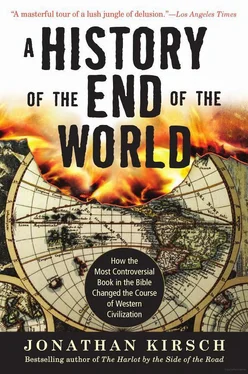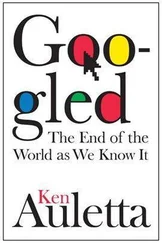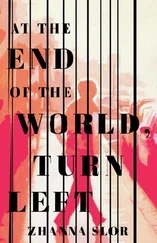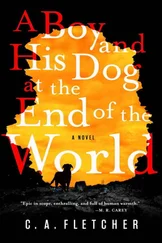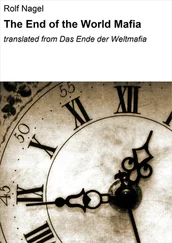When the Civil War ended, however, America found itself in a world that was wholly unforeseen by the prophets of old. Americans began to leave farms and small towns for the big cities in ever greater numbers. Village workshops were replaced by the smoke-belching factories of the kind that Blake called “satanic mills.” Horse-drawn carriages and ox-drawn Conestoga wagons were left behind in the smoke of locomotives. Communications flashed across the continent, first over telegraph lines and then over telephone lines. America had been an immigrant nation since the first Pilgrim Father stepped onto Plymouth Rock, of course, but now Ellis Island and Angel Island were beginning to teem with new arrivals from exotic places all over Europe and Asia.
All of these phenomena were proof of the success of the American experiment, but not everyone welcomed the newcomers or the new ways of life. Here was a new culture war in the making: the changing face of America was seen as the march of progress by some observers and as the decline and fall of civilization by others. And one way of understanding—and resisting—the brave new world in which Americans now lived was the religious stance that came to be called “fundamentalism”—that is, a return to what were imagined to be older and more authentic values in culture, politics, and religion. Thus, for example, the latest generation of Bible literalists, known as “premillennialists” because they believed that they were living in the final age before the Second Coming and the millennial kingdom of Jesus Christ, came to be convinced that they were witnessing the signs of the end-times as predicted in Revelation.
“[A]ll premillennialists seemed to have a real stake in the unraveling of modern life,” explains Timothy P. Weber. “As far as premillennialists were concerned, the turbulent and troublesome decades after the Civil War were proof positive that everything was right on schedule.” 57
“Premillennialism,” and a related if more nuanced term, “dispensational premillennialism,” are used to describe the eschatological stance of one strain of Christian fundamentalism—the belief that Jesus Christ will return to earth and reign over the millennial kingdom exactly as described in the book of Revelation. [4] See the Glossary for a brief explanation of these terms.
That is, the premillennialists refuse to content themselves with an allegorical reading of Revelation, and they are convinced that they will behold with their own mortal eyes the sight of Jesus Christ descending from heaven on a cloud, seating himself on an earthly throne, and reigning over a kingdom of saints for a thousand years. For premillennialists, then, the second coming of Jesus Christ is a “real, literal, personal bodily coming.” 58
Strictly speaking, premillennialism is based on the belief that Jesus Christ will return to earth before the establishment of the millennial kingdom. By contrast, “postmillennialism” is based on the conviction that Jesus Christ will return only after the millennial kingdom has been established through “the triumph and rule of the true church” and “human progress and moral advance achieved through the prayerful efforts of Christian believers in the present age.” 59Thus, as a general if not invariable rule, postmillennialists tend to focus on good works in the here and now, and premillennialists tend to cast their eyes heavenward in the hope of spotting Jesus Christ coming on a cloud of glory. To put it another way, the followers of Father Miller were premillennialists, and the adherents of the Social Gospel were postmillennialists. Both camps, however, embraced the apocalyptic idea, and they disagreed only on the timing of the end of the world.
“The theory put the end indefinitely far away,” confesses postmillennialist theologian William Newton Clarke (1841–1912), “and yet I listened trembling for the trump of God in every thunder-storm.” 60
None of these notions were wholly new when they surfaced in America in the years after the Civil War. Indeed, as we have already seen, the debate between those who read Revelation “carnally” and those who read it “spiritually” goes all the way back to Augustine. Now, however, the banked fires of apocalyptic true belief burst into flames yet again, and they burned as hotly in the New World as they had at any time since Montanus and his prophetesses first announced that the New Jerusalem would descend out of the clouds at any moment.
Yet the apocalyptic true believers in nineteenth-century America insisted on putting a new spin on the oldest texts. Ironically, the Bible literalists were perfectly willing to tinker with Holy Writ when it came to the troubling prospect of what will happen to good Christians in the end-times. The plot twist that they introduced into the gloom-and-doom scenario of Revelation was the single greatest innovation in the apocalyptic tradition since John first described the visions that came to him on the isle of Patmos. Remarkably, the apocalyptic preachers rewrote the history of the end of the world with the happiest of endings.
Aplain reading of Revelation suggests that everyone on earth in the endtimes—men, women, and children, saints and sinners alike—will be compelled to endure the suffering to be inflicted on humankind by the Antichrist during the final years of persecution and oppression known as the Tribulation. Only after the Tribulation is over will the dead saints and martyrs be raised from the grave and allowed to enjoy their just rewards in the kingdom to come.
Certain cheerful Christians in nineteenth-century America, however, refused to believe that they would be called upon to endure such afflictions, and they insisted on embracing a new and highly inventive version of the end of the world. Christians who are worthy of salvation, they preferred to believe, will be miraculously plucked up and elevated to heaven before the Tribulation begins in earnest. Seated in the galleries of heaven, they will be privileged to look down and watch as everyone who has been left behind on earth suffers and dies under the Antichrist. Only when the Tribulation is over will they return to earth in the company of Jesus Christ to dwell in the millennial kingdom. Their comforting theological innovation came to be called the Rapture.
Neither the word nor the concept of the Rapture is mentioned anywhere in Revelation. Rather, the whole notion of the Rapture is based on a couple of lines of biblical text in the First Letter to the Thessalonians, the earliest of Paul’s writings and perhaps the single oldest document in the New Testament. And, significantly, Paul seems to believe that the remarkable events he describes will take place in his own lifetime rather than at some unknown point in the future.
For the Lord himself will descend from heaven with a cry of command, with the archangel’s call, and with the sound of the trumpet of God. And the dead in Christ will rise first; then we who are alive, who are left, shall be caught up together with them in the clouds to meet the Lord in the air; and so we shall always be with the Lord. 61
But it was only in the late nineteenth century—and principally in America—that the idea of the Rapture was elevated into an article of faith among Christian fundamentalists. Indeed, the whole idea has been credited to an Anglo-Irish preacher named John Nelson Darby (1800–1882), who found an appreciative audience for his new teaching over the course of seven lecture tours to America between 1859 and 1877. Some scholars trace various elements of Darby’s new apocalyptic doctrine back to sources ranging from Joachim of Fiore to Increase Mather, and Darby has even been accused of stealing the whole idea of the Rapture from a young woman named Margaret McDonald, a fifteen-year-old Scottish religious ecstatic. Darby himself insisted that “the doctrine virtually jumped out of the pages of Scripture.” 62Whatever the ultimate source of his inspiration, however, the fact remains that Darby was an authentic innovator who managed to find a credulous and enthusiastic audience in the New World.
Читать дальше
